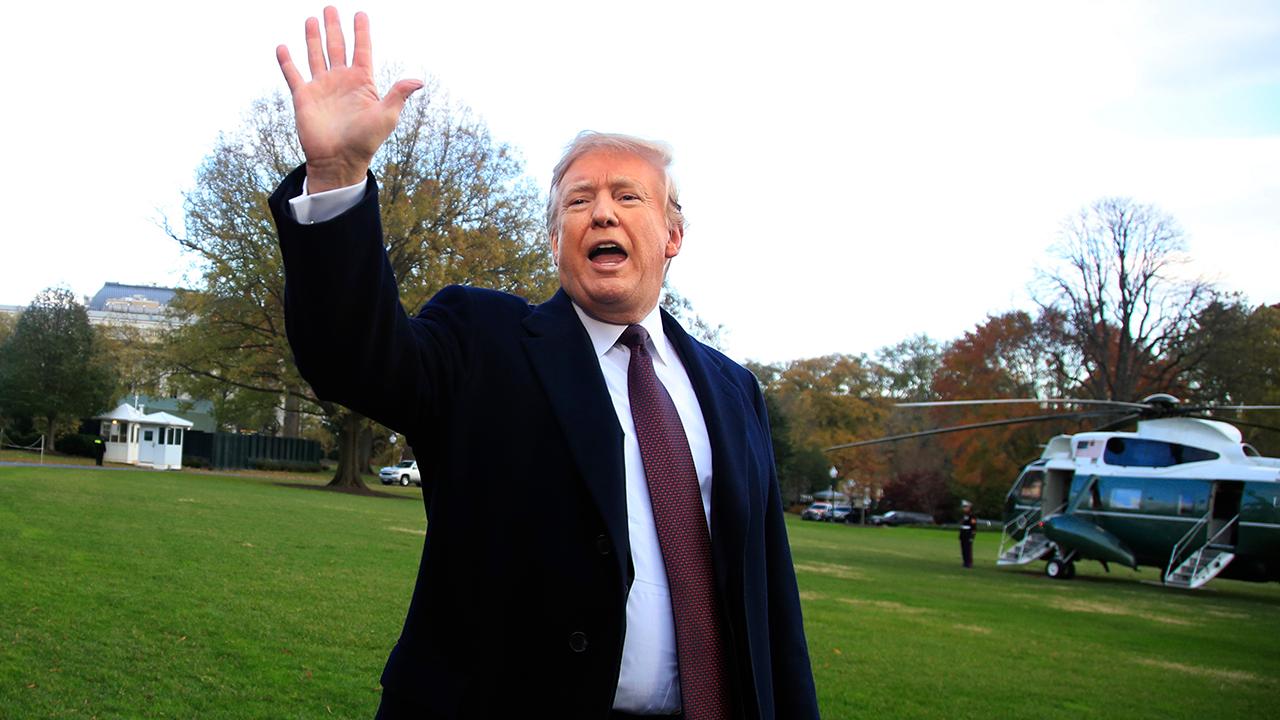Partial government shutdown begins: Here's what you need to know
Government shutdown looms as Trump pushes for border wall funding
Trump 2020 Advisory Board Member Harlan Hill and former Hillary Clinton senior adviser Philippe Reines on the fight over border wall funding and how President Trump threatened to cut all General Motors' subsidies.
The federal government shutdown early Saturday as congressional leaders -- and President Trump -- failed to strike a bipartisan funding deal, after publicly feuding about how much money to give toward the U.S.-Mexico border wall.
Vice President Mike Pence, Trump's son-in-law and senior adviser Jared Kushner and White House budget chief Mick Mulvaney bargained for hours with congressional leaders, but left the Capitol still at an impasse.
There's unlikely to be a resolution anytime soon: Although negotiations continued on Saturday, the Senate has adjourned until Dec. 27. In a note to her colleagues, incoming Speaker of the House Nancy Pelosi wrote that there will be no resolution until January, when Democrats regain control of the House.
"Until President Trump can publicly commit to a bipartisan resolution, there will be no agreement before January when the new House Democratic majority will swiftly pass legislation to re-open government," she wrote.
Most federal operations come to a halt because the government loses its authority to spend money. The services that continue are those that are essential to national security and health, like veteran's hospitals, Social Security and the military. The U.S. Postal Service will also continue to operate, because it's an independent body.
On Friday, Trump threatened to shut down the government for a "very long time" if Senate Democrats rejected a funding bill passed by the House that included money to build a wall.
"The Democrats, whose votes we need in the Senate, will probably vote against Border Security and the Wall even though they know it is DESPERATELY NEEDED," he wrote on Twitter. "If the Dems vote no, there will be a partial shutdown that will last for a very long time. People don’t want Open Borders and Crime!"
Last week, Trump warned that he’d be "proud to shut down the government for border security" if he doesn’t receive his requested $5 billion in funding for a border wall ahead of a looming Dec. 21 deadline that could prompt a partial government shutdown.
That’s because earlier this year, congressional leaders struck a bipartisan deal to avoid a shutdown by funding three-fourths of the government into 2019. Funding for the Department of Homeland Security (DHS), which is tasked with border security, and several other agencies will expire on Friday. The other, less controversial agencies include the departments of Agriculture, Commerce, Justice, Interior, State, Transportation and Housing and Urban Development.
The very public discord left it unclear whether the two sides could come to an agreement before the deadline, or whether they’d be locked in a stalemate.
A bipartisan deal in the Senate approved $1.6 billion in border security, but Trump remained adamant that he needed the $5 billion to fund the centerpiece of his 2016 presidential campaign.
Trump signed a bipartisan stopgap spending bill on Friday to avert a shutdown, extending the original Dec. 7 deadline to Dec. 21. The House and the Senate unanimously passed the bill."It’s his choice to accept one of those options or shut the government down," they said.
Although Trump has made similar threats in the past (and not followed through on them), congressional leaders have also amped up their political posturing. Schumer said a few weeks ago that Congress should pass a stopgap spending bill for the DHS if Trump won’t agree to the security funding, according to The Hill. He also said Senate Democrats would support passing spending bills for the six other agencies, while extending funding for the DHS for one year.
"If President Trump wants to throw a temper tantrum and shut down some departments and agencies over Christmas, that's certainly within his power, but he has two more sensible options available to him. It would be a shame if the country suffered because of a Trump temper tantrum. It's the president's choice," Schumer said on the Senate floor, per The Hill.
The Senate needs a 60-vote threshold to pass funding legislation, but Republicans only hold 51 seats. It will be the last funding struggle before Democrats take control of the House in January.
If the government does shut down, it will not only be expensive, but costly to furloughed government employees, who don’t get paid when the government is shut down.
While Trump has occupied the Oval Office, the government shut down twice, largely because of partisan debate about immigration. The first began on Jan. 20 when the majority of Democrats voted "no" against a spending bill they criticized for not addressing the Deferred Action for Childhood Arrivals program (DACA). The government reopened on Jan. 23 after a stopgap bill was passed.
On Feb. 9, when the stopgap funding ended, the government shut down again. It lasted only a few hours before Trump signed a funding bill into law that financed the government through March 23.
Fox News' Chad Pergram contributed to this report.





















